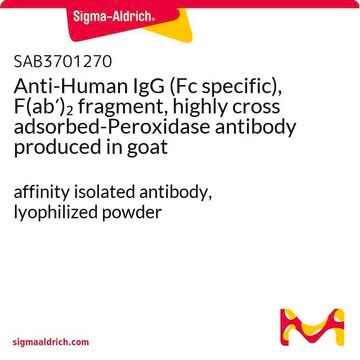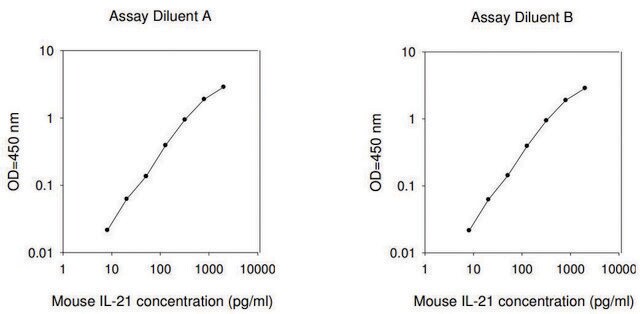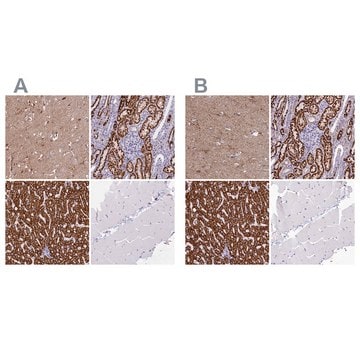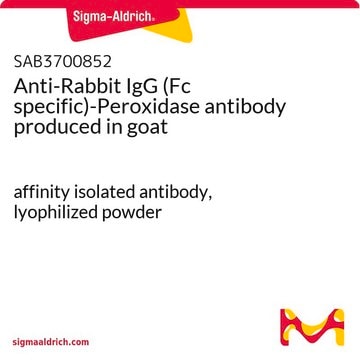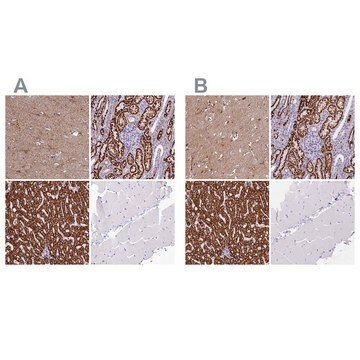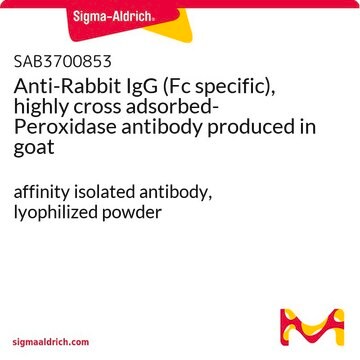SAB3700870
Anti-Rabbit IgG (Fc specific), F(ab′)2 fragment-Peroxidase antibody produced in goat
affinity isolated antibody, lyophilized powder
Synonym(s):
HRP
Sign Into View Organizational & Contract Pricing
All Photos(1)
About This Item
UNSPSC Code:
12352203
NACRES:
NA.46
Recommended Products
biological source
goat
conjugate
peroxidase conjugate
antibody form
affinity isolated antibody
antibody product type
secondary antibodies
clone
polyclonal
form
lyophilized powder
species reactivity
rabbit
technique(s)
immunohistochemistry: suitable
indirect ELISA: suitable
western blot: suitable
shipped in
wet ice
storage temp.
2-8°C
target post-translational modification
unmodified
Specificity
This product was prepared from monospecific antiserum by immunoaffinity chromatography using Rabbit IgG coupled to agarose beads followed by solid phase adsorption(s) to remove any unwanted reactivities, pepsin digestion and chromatographic separation. Assay by immunoelectrophoresis resulted in a single precipitin arc against Anti-Peroxidase, Anti-Goat Serum, Rabbit IgG, Rabbit IgG F(c) and Rabbit Serum. No reaction was observed against Anti-Pepsin, Anti-Goat IgG F(c) or Rabbit IgG F(ab′)2.
Immunogen
Rabbit IgG F(c) fragment
Physical properties
Antibody format: IgG F(ab′)2
Physical form
Supplied in 0.02 M Potassium Phosphate, 0.15 M Sodium Chloride, pH 7.2 with 10 mg/mL Bovine Serum Albumin (BSA) - Immunoglobulin and Protease free
Reconstitution
Reconstitute with 500 μ;L deionized water (or equivalent).
Disclaimer
Unless otherwise stated in our catalog or other company documentation accompanying the product(s), our products are intended for research use only and are not to be used for any other purpose, which includes but is not limited to, unauthorized commercial uses, in vitro diagnostic uses, ex vivo or in vivo therapeutic uses or any type of consumption or application to humans or animals.
Not finding the right product?
Try our Product Selector Tool.
Certificates of Analysis (COA)
Search for Certificates of Analysis (COA) by entering the products Lot/Batch Number. Lot and Batch Numbers can be found on a product’s label following the words ‘Lot’ or ‘Batch’.
Already Own This Product?
Find documentation for the products that you have recently purchased in the Document Library.
Silvia Ravera et al.
Cancers, 16(9) (2024-05-11)
Oral cancer is the 16th most common malignant tumor worldwide. The risk of recurrence and mortality is high, and the survival rate is low over the following five years. Recent studies have shown that curcumin causes apoptosis in tumor cells
Yao-Lei Zhang et al.
Oncology reports, 45(6) (2021-04-14)
Colorectal cancer (CRC) is the third most diagnosed cancer worldwide. Progesterone is associated with a decreased risk of CRC and leads to a favourable prognosis. However, the specific mechanism by which progesterone suppresses malignant progression remains to be elucidated. In
Nadia Bertola et al.
Antioxidants (Basel, Switzerland), 12(5) (2023-05-27)
Fanconi anemia (FA) is a rare genetic disease characterized by a dysfunctional DNA repair and an oxidative stress accumulation due to defective mitochondrial energy metabolism, not counteracted by endogenous antioxidant defenses, which appear down-expressed compared to the control. Since the
Impaired Mitochondrial Function and Marrow Failure in Patients Carrying a Variant of the SRSF4 Gene.
Maurizio Miano et al.
International journal of molecular sciences, 25(4) (2024-02-24)
Serine/arginine-rich splicing factors (SRSFs) are a family of proteins involved in RNA metabolism, including pre-mRNA constitutive and alternative splicing. The role of SRSF proteins in regulating mitochondrial activity has already been shown for SRSF6, but SRSF4 altered expression has never
Altered Mitochondrial Dynamic in Lymphoblasts and Fibroblasts Mutated for FANCA-A Gene: The Central Role of DRP1.
Bertola, et al.
International Journal of Molecular Sciences, 24 (2023)
Our team of scientists has experience in all areas of research including Life Science, Material Science, Chemical Synthesis, Chromatography, Analytical and many others.
Contact Technical Service